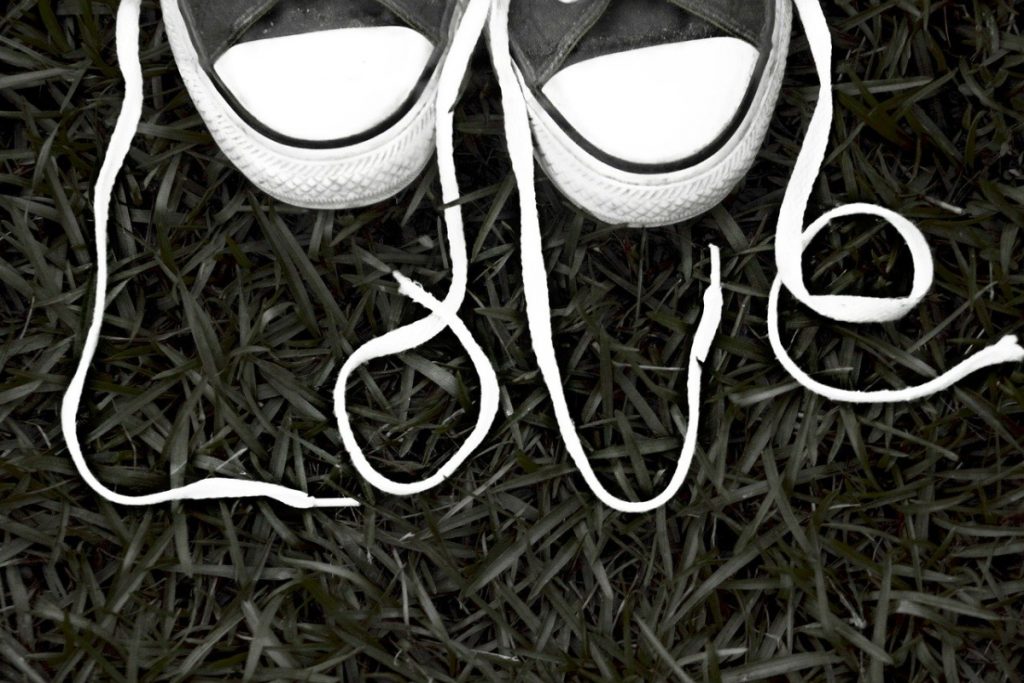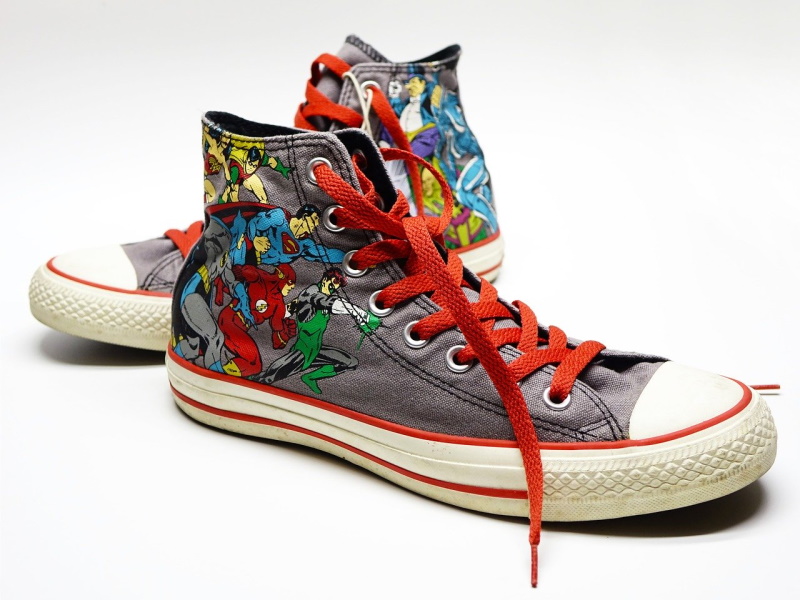Most people use the default lacing system that comes with their shoes when they first purchase them. However, this generic lacing pattern might not always provide the best fit, since people have different types of feet. It’s, therefore important, to tailor the lacing pattern of your shoes based on the unique dynamics of your foot. Whether you have narrow feet, raised arches, wide feet, a wide foot, a shallow instep or your heel keeps slipping, the following lacing techniques can help to obtain a comfortable fit and prevent some common foot issues.
Narrow Feet
If you have narrow feet, finding shoes that fit your feet properly can prove to be a challenge. In fact, only a few companies produce shoes for people with narrow feet. As a result, most people with narrow feet end up purchasing regular width shoes, which eventually causes various foot problems such as discomfort and irritation. If you have narrow feet and you purchase regular width shoes, your foot will definitely keep slipping around the shoes, leading to blisters, hot spots, calluses, and corns, among other foot problems. Also, if your shoes are oversize, they might affect your walking pattern. Besides, you might even trip and fall or even twist an ankle. The risk is even higher for people who are physically active like runners or weight lifters.
However, just because you have narrow feet doesn’t mean that you cannot wear your favorite pair of sneakers or boots. There are various lacing techniques, which you can use to obtain the right fit if you have narrow feet. For instance, you can use the segmented lacing system, where you first lace the three eyelets and then tighten the laces first, before you proceed to the fourth eyelet. If your shoes are equipped with a gaiter, then you should loop the laces through it first, before you proceed to the 4th eyelet. And if the shoes don’t have a gaiter catch, you can instead use a reef knot or a surgeon’s knot at the third eyelet before you insert the laces into the fourth one. After that, you can continue lacing the shoes as normal. This lacing technique helps to provide extra stability to your foot while reinforcing your stance.
Wide Feet
Wide feet are mainly a result of genetics. Pregnant women can also experience a widening of the feet at some point during the pregnancy. If you have wide feet, you just need to purchase wide shoes and you will have dealt with that problem effectively. But if that is not an option, you just need to change how you lace your shoes and you will obtain a comfortable fit. There are two main lacing techniques for wide feet – parallel lacing and crisscross lacing. In parallel lacing, the laces are spread evenly across the tongue, which means that the pressure is also equally distributed. On the other hand, crisscross lacing helps you to adjust the shoes across the instep, depending on your preferred fit. If shoes become too tight after your feet expand, you simply need to adjust them accordingly. You can also experiment with the volume lacing method, which allows your dress shoes, sneakers, or boots to widen themselves naturally, thus reducing the break-in period. Depending on the size of your foot, you may have to try several variations of the above lacing patterns to find the ideal balance between stability and looseness.
Lacing to Prevent Heel Slippage
Heel slippage is common in different types of footwear. And if it’s not addressed early enough, it can lead to blisters and hotspots. Also, if the foot keeps sliding back and forth, it will bang against the shoe box, thus bruising your toenails. The good news is that you can minimize or even eliminate this problem completely, using various lacing techniques. First, when you are tying your laces, you should lock them at the upper part of your boots. When you use this lacing system, you will pull the foot towards the rear part of your boots, thus helping to prevent slipping. Also, this lacing system will improve the comfort of your shoes considerably. Second, use a bowless lacing system. With the bowless lacing system, you don’t have to keep re-tying your shoelaces every time they come off. Instead, it will allow you to wear them snuggly without having to re-tighten them frequently. Loop lacing or lock lacing can also help to prevent this problem. The loop lacing technique helps to secure the heel, which means you will experience minimal foot slippage or none at all. With the loop lacing, you will tie your laces using any lacing technique. But instead of crossing the laces at the top of the shoe, you will create loops, where the two laces will cross vertically.
High Arches and High Instep
If you experience pain or discomfort at the top of your foot when walking, there is a high chance that you have a high instep. You are experiencing this discomfort because the shoes you are wearing are not providing adequate volume that your feet need. To address this issue, you need to use a lacing system that creates some space around the middle of your foot. Instead of using the normal crisscross lacing, you should instead skip some alternate eyelets, thus allowing the instep some breathing room. Also, you can use the volume lacing method, which will open up the middle section of the lace pattern, thus helping to alleviate some pressure exerted on the instep while ensuring the shoes remain secure around the balls of your feet, heel, and toes. Once you’ve finished tying the laces, you can then walk around with the shoes, examine the tightness around the instep and then adjust the laces accordingly.
Midfoot Support
People with a shallow instep might need additional support around the midfoot section of the foot, and this is where the midfoot lock lacing system comes in. This lacing system creates natural support throughout the instep section, by pulling the middle part of the shoe up and in. Besides providing additional midfoot support, this lacing system also helps to minimize lateral foot movement. The midfoot lock lacing system can be particularly beneficial in people participating in sports like netball, tennis, football, and basketball, which involve plenty of movement and sudden directional changes. And if you have both a narrow heel and a shallow instep, then you can try a combination of midfoot lock lacing and an ordinary lock lacing system. By using a combination of these two lacing systems, you will secure the arch firmly onto the innersole, thus creating a supportive and snug fit for the ankle and the heel.
Relieve Toe Pain
If your toes are constantly rubbing against the front part of the shoe, you might end up with black toenails or painful toes. You can alleviate this problem by lifting the slightly lifting the toe box using the single diagonal thread lacing pattern. Once you’ve finished lacing your shoes, the single diagonal thread will lift the front and top part of your shoe, thus leaving some wiggle room for the toes. As a result, it will minimize friction while helping to prevent the toes from sliding or slipping forward when you are walking or running. When threading the shoes, one of the laces will have to be longer than the other. The shorter end of the lace will run diagonally from the bottom eyelet to the top eyelet while the longer end will secure the remaining eyelets.
Closing Remarks
The lacing pattern you use can make a significant difference sin the fit and comfort of your shoes. Therefore, make sure you choose a style that supports your feet evenly and comfortably. By enhancing the fit of your shoes with the right lacing technique, you will minimize foot pain, prevent injuries, relieve foot problems and enjoy a comfortable walking or running experience.





0 comments